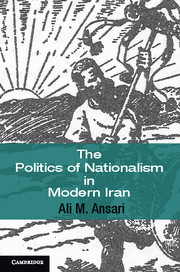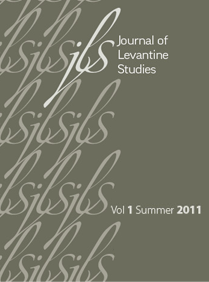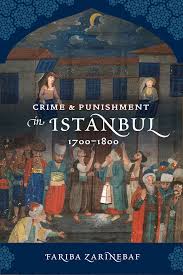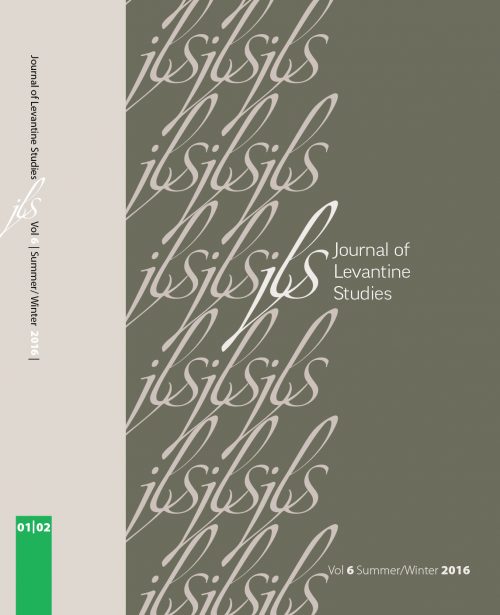-
Add to cartQuick view
Ali M. Ansari, The Politics of Nationalism in Modern Iran. New York: Cambridge University Press, 2012. 327 pp.
Ali M. Ansari, The Politics of Nationalism in Modern Iran. New York: Cambridge University Press, 2012. 327 pp.
$5.00Free!Add to cartQuick view -
Add to cartQuick view
Back to the Future: The Jerusalem Exhibit at the 1904 St. Louis World’s Fair
Free!The famous St. Louis World’s Fair of 1904 was a vast celebration of the new century and its promise of a future governed by technological and scientific progress. It is not often remembered that in the heart of this paean to modernity stood an enormous and astonishingly life-like replica of the Old City of Jerusalem. Evoking the past rather than the future and transcendence rather than materiality, what was Jerusalem doing in the St. Louis Fair? How did its presence challenge, complicate, or legitimize the popular narratives of modernization with which it was surrounded? Through a description of the fair and the replica—and contra theories that continue to adhere to the secularization thesis and its structuring binaries—this essay is an examination of the preservation and deployment of religious themes and symbols within modernity.
Add to cartQuick view -
Add to cartQuick view
Being Muslim and European Without Contradiction—Myth or Reality?
Free!The article reviews a critique of European modernity through the eyes of Bassam Tibi, a European Muslim sociologist. Tibi’s discursive analysis presents a detailed description of how an Islamic pluralism addresses the conceptual, philosophical, cultural, social, and political interpretations of Islam in a European context. His Islamic pluralism suggests the ways in which a secular interpretation of Islam can influence religion-state relations in Europe. Exploring the tensions resulting from being both Muslim and European, Tibi proposes that Muslims in Europe avidly maintain some basis of Islam within their identity, even if they adapt that interpretation to make it compatible with European norms and values. His perspectives are juxtaposed with Muslim intellectual opposition to a European Islamic pluralism that offers a basis for Islamic diversity in Europe. The article concludes that even Tibi’s moderate interpretation of Islam does not fully eliminate the inherent contradiction involved in being both Muslim and European, although he does suggest a means of bridging cross-cultural tensions.
Add to cartQuick view -
Add to cartQuick view
Center or Frontier: Hungary and Its Jews, Between East and West
Free!In the history of Hungarian political thought, East and West served as counter concepts. The first part of the article presents and analyses the history of the Eastern and Western political orientations of Hungarian nationalism from the late eighteenth to the mid-twentieth century. Key representatives of these orientations are presented with their versions of Hungarian “usable past.” Each orientation (Eastern or Western) views the second orientation as “other.”
The second part of the article describes how Hungarian Jewish spokespeople dealt with Hungarian nationalism vis-à-vis growing anti-Semitism in Hungary in the late 1930s and early 1940s. Using the East-West metaphors, some Hungarian Jewish spokespeople tried to present Hungary’s anti-Semitic campaign as stemming from foreign, non-Hungarian sources.
Add to cartQuick view -
Add to cartQuick view
E-Transnationalism: The Case of the Christian Zionist Community in Israel
Free!The creation of the Internet has allowed religious individuals and groups to connect with other people and communities from around the world in exciting new ways. However, members of religious communities have also discovered that the Internet may not only facilitate online transactions and interactions but also complicate or hamper them. This paper seeks to better understand how one religious group—the transnational Christian Zionist community in the Holy Land—benefits from online tools and forums as well as how it contends with some of the obstacles encountered online. The author first provides an overview of the theoretical framework and methodology employed. This is followed by a summary of the religious tradition and an exploration of the ways in which the Internet affects the community, enabling them to send and receive money, objects, and information transnationally and forcing them to deal with unique challenges as well as old tensions replicated online from the “real” world.
Add to cartQuick view -
Add to cartQuick view
Fariba Zarinebaf, Crime and Punishment in Istanbul, 1700–1800. Berkeley, University of California Press, 2010. 304 pp.
Fariba Zarinebaf, Crime and Punishment in Istanbul, 1700–1800. Berkeley, University of California Press, 2010. 304 pp.
$5.00Free!Add to cartQuick view -
Add to cartQuick view
Harbingers of Feminism: A New Look at the Works of Pioneering Palestinian Women Writers
Free!This article brings to light the harbingers of the tradition of Palestinian women’s writing in a gendered reading of the works of two leading, post-1948 women writers, Samira ʿAzzam and Najwa Qaʿwar-Farah. The article examines why literary critics ignored the feminine dimension of these writers’ works, and saw them as imitating and adapting existing patterns and conventions of writing. The article shows, how both thematically and stylistically, these early writers highlighted their feminine presence and that of their heroines; to what extent they succeeded in imbuing their writing with feminist messages; and how they enabled later women writers by laying the foundations of a tradition of women’s literature.
Add to cartQuick view -
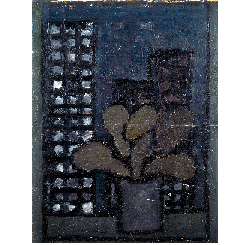 Add to cartQuick view
Add to cartQuick viewLandscape Representations in Palestinian Art and Israeli Art Discourse: The Case of Asim Abu Shaqra
Free!This article will survey the historical shift and ongoing transformation of Israeli discourse on landscape representations in Palestinian art, as illustrated by the case of Asim Abu Shaqra’s (1961-1990) artwork. Abu Shaqra is one of the very few Palestinian artists who have entered the canon of Israeli art. After graduating in 1986 from the Kalisher Art Academy in Tel Aviv, Abu Shaqra had his first solo exhibition in 1988, at Rap Gallery in Tel Aviv. Over the two subsequent years—until his premature death from cancer in 1990, at the age of twenty-nine—he had three more solo shows and participated in four group exhibitions. In 1994, four years after his death, a comprehensive retrospective exhibition of his work was presented at Tel Aviv Museum’s Helena Rubinstein Pavilion.
The art discourse on Abu Shaqra’s oeuvre, from the very beginning of his activity in the 1980s down to this day, reflects the historical transformations that the Israeli artistic field has undergone in relation to the work of Arab-Palestinian artists who graduated from Israeli art schools. Abu Shaqra’s 1994 retrospective exhibition—which took place in the wake of the dramatic period that began with the outbreak of the first Intifada in 1987 and ended with the Oslo Accords in the early 1990s—marked a historical turning point in the discourse on Palestinian art created in Israel. The rise of a public debate over the nature of Palestinian identity, made possible by the peace process and the Oslo Accords, included a process (still unfolding today) of growing recognition of the Palestinian culture created in Israel. This recognition, in turn, has generated a significant shift in the interpretive templates governing the reception of landscape representations in the work of Palestinian graduates of Israeli art schools.Add to cartQuick view -
Add to cartQuick view
Life under the Last Sky: History, Memory, and Trauma in Dudu Busi’s Noble Savage
Free!This essay addresses questions of responsibility and survival and the possibilities of life in a fictional, contemporary Israeli urban setting imbued with violence and its related memories from both the recent and pre-Israeli past. In Noble Savage, Mizrahi novelist Dudu Busi engages with the question of survival in a southern Tel Aviv slum. Eli, the protagonist, perceives life in the slum as an ongoing struggle for survival. Life is a maze that Eli navigates by defending himself and avoiding the omnipresent violence that exists both outside in the neighborhood and inside his own home. Utilizing theories of space, and addressing questions of trauma and testimony, the essay analyzes the violent relations that are formed between space, body, and subject. These violent relations, I argue, imprison the characters in a cycle of unethical and politically undesirable behavior. These questions of survival and life are conveyed beyond the literary setting and into the reality of the novel’s reception as a “threatening” or “dangerous” book. The essay presents Busi’s novel as the basis for a critical stance vis-à-vis the violent reality in Israeli slums. Busi’s stance does not absolve the residents of accountability for their violent acts; instead, it urges them to assume responsibility for these acts, which might put an end to the cycle of violence.
Add to cartQuick view -
Add to cartQuick view
Organic Poetry: Ataol Behramoğlu
Free!This dossier presents three translated essays, by Leyla Erbil (1931–2013), Şavkar Altınel (1953–), and Ataol Behramoğlu (1942–), that inquire into the question of authenticity as related to tradition, individuality, and artistic creativity. The authors try to define what these concepts mean in the Turkish literary field. Prof. Sibel Erol’s essay serves as both an editorial introduction to these translations and an investigation in its own right into the question of whether there is a real Turkish literature. She engages with the heart of the debate through an analysis of the Turkish writer Erbil’s essay titled “On the Question of an Authentic and Original Turkish Literature.” Altınel’s “Yahya Kemal, T. S. Eliot, and the Force of ‘Tradition'” and Behramoğlu’s “Organic Poetry,” while not written directly in response to Erbil’s essay or the question she raises, are in conversation with each other, enriching the debate on literary tradition in general and the state of Turkish literature in particular.
Add to cartQuick view -
Add to cartQuick view
Papal Power, the Portuguese Inquisition, and a Consilium of Cardinal Pier Paolo Pariseo
Free!The traditional picture painted by Alexandre Herculano portrays the interactions between the papacy and King John III of Portugal, which ended in the establishment of the Portuguese Inquisition and the free hand given to it, as the product of cynicism. The vagaries of the papal court certainly intervened. However, by reexamining the tens of papal letters issued concerning the Inquisition’s origins, many of which Herculano may not have seen, one comes to a different conclusion, one reinforced by a consilium (in fact, two that are read as one) by the Bolognese professor of law and eventual cardinal, Pier Paolo Pariseo. Composed at papal request, this consilium insists on pardoning, as the pope wished, those converted in 1497, because coacti fuerunt (they were forced), words that appear in the papal letters as well. The history of forced conversion gives reason to assume both pope and professor were sincerely perturbed. More, both were insistent on reinforcing the idea of papal supremacy in matters mere ecclesiasticum, as well they should have been. For the drama of the Inquisition took place parallel to the great struggle of the pope with Henry VIII of England, who claimed, in so many words, such powers for himself. Moreover, Henry VIII, because he remained theologically a Catholic, was a greater threat in many ways than Luther. Would the Portuguese monarchy, and perhaps others, follow Henry, leaving the pope truly powerless?
Add to cartQuick view -
Add to cartQuick view
Review Essay: Georges Tarabichi and the Religionization of the Public Sphere: A Heretic Voice from the East
Free!Georges Tarabichi. هرطقات [Heresies]
Vol. I: عن الديموقراطية والعلمانية والحداثة والممانعة العربية [On Democracy, Secularism, Modernity and Arab
Reluctance], 3rd ed. Beirut: Dar al-Saqi and The Association of Arab Rationalists, 2011. 237 pp.
Vol. II: العلمانية كإشكالية إسلامية – إسلامية [Secularism as an Intra-Islamic Issue], 2nd ed. Beirut: Dar al-Saqi and The Association of Arab Rationalists, 2011. 253 pp.Add to cartQuick view
- Home
- About JLS
- Issues
- Vol. 9 No. 1 | Summer 2019
- Vol 8 No 2 Winter 2018
- Vol. 8, No. 1: Summer 2018
- Vol. 7, No. 2: Winter 2017
- Vol. 7, 1: Summer 2017
- Vol. 6, Summer/Winter 2016
- Vol. 5, No. 2 Winter 2015
- Vol. 5, No. 1 Summer 2015
- Vol. 4, No. 2 Winter 2014
- Vol. 4, No. 1 Summer 2014
- Vol. 3, No. 2 Winter 2013
- Vol. 3, No. 1 Summer 2013
- Vol. 2, No. 2 Winter 2012
- Vol. 2, No. 1 Summer 2012
- Vol. 1, No. 2 Winter 2011
- Vol. 1, No. 1 Summer 2011
- Blog
- dock-uments
- Subscribe
- Submit
- Contact

